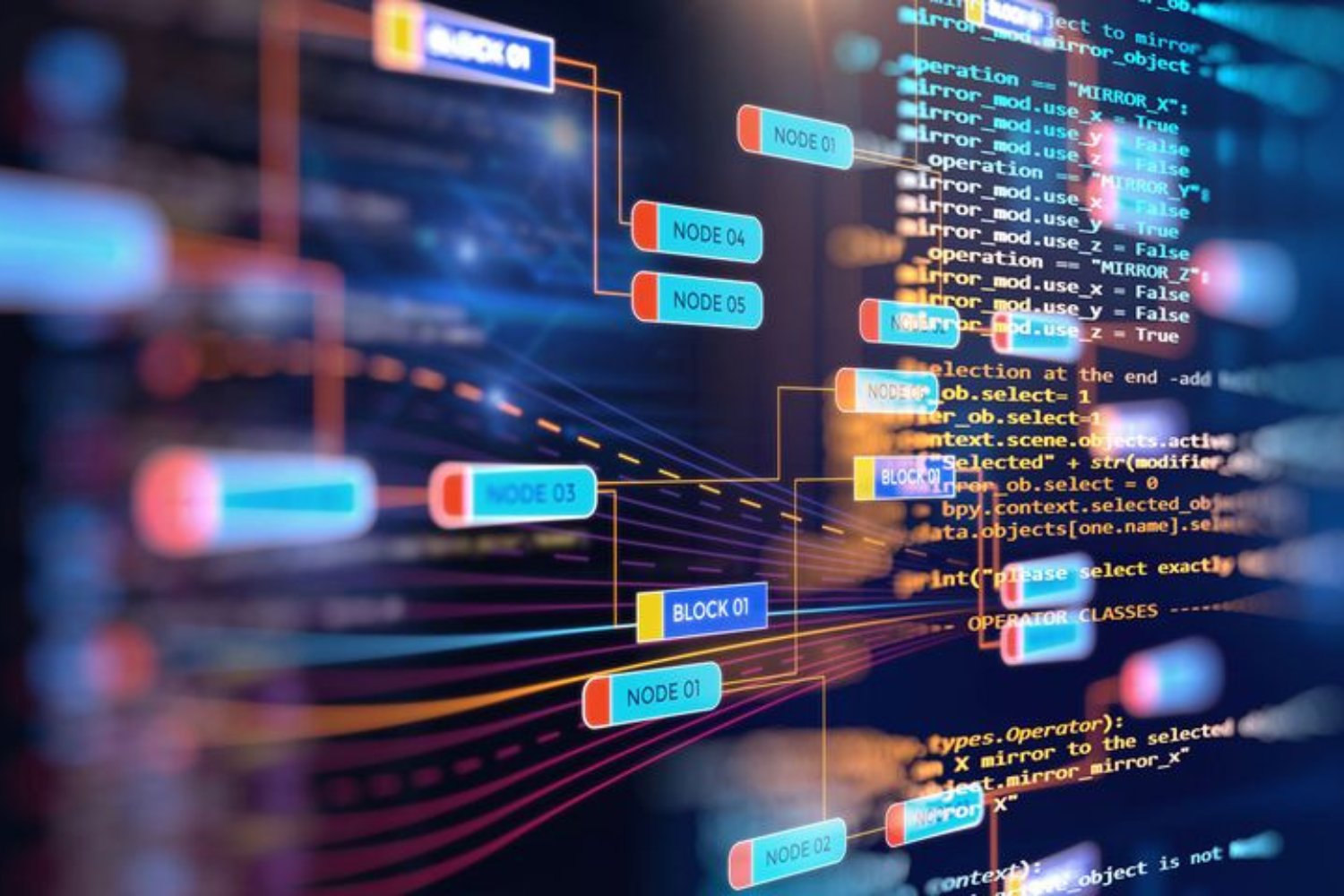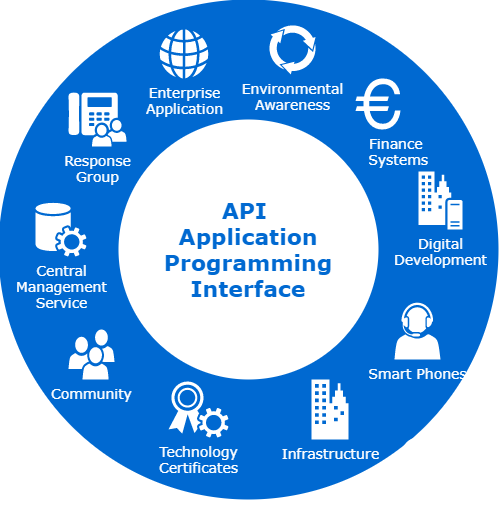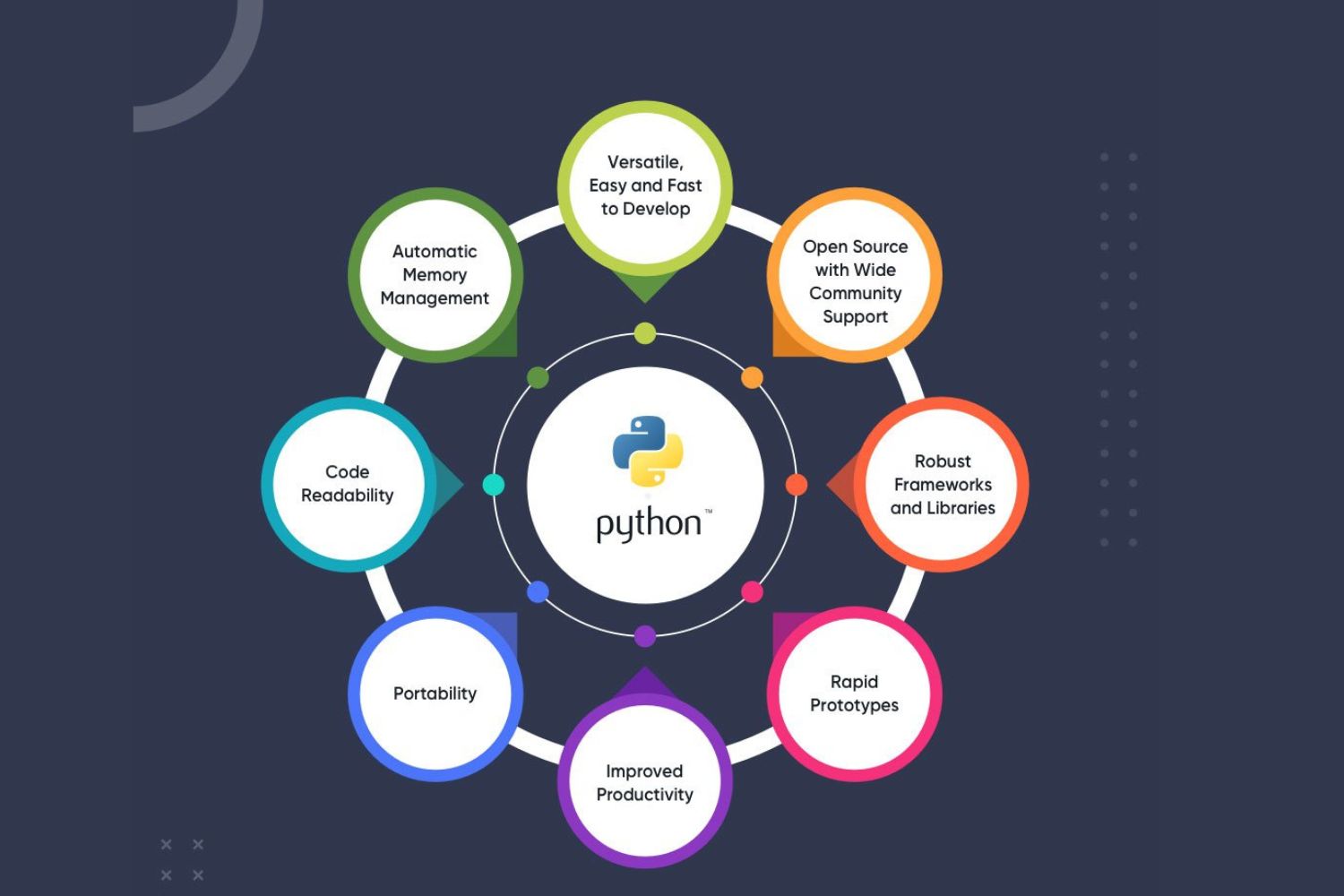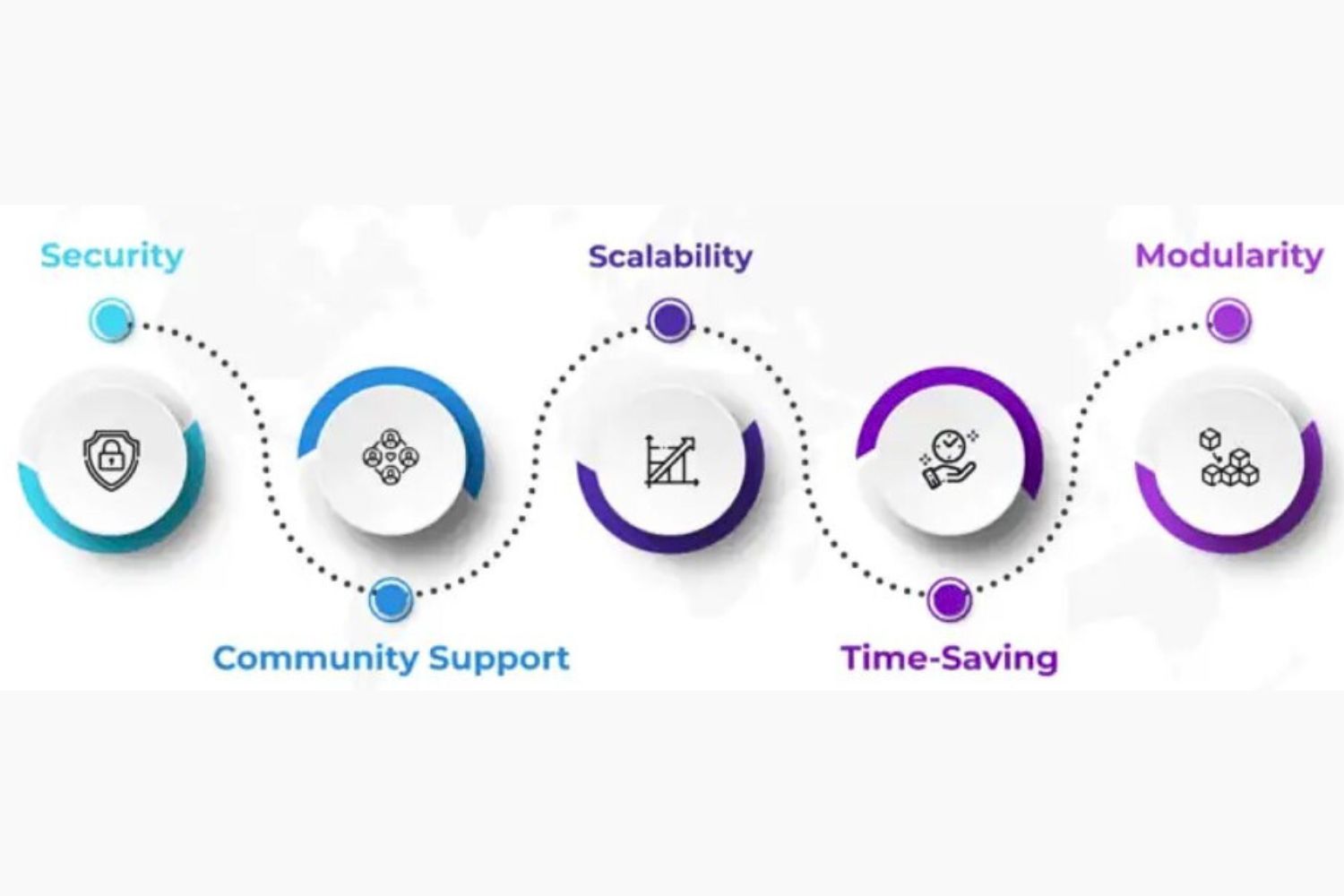
PYTHON BACKEND TECHNOLOGY
Backend technology refers to the server-side of a website or application that handles the processing of data and functionality. Python is a popular programming language used for backend development due to its simplicity and versatility. Some important skills for Python backend development include proficiency in frameworks such as Django or Flask, database management systems like MySQL or PostgreSQL, and knowledge of web protocols such as HTTP and REST
Python plays a crucial role in backend development as it allows developers to create efficient and scalable web applications. With its extensive library support and strong integration capabilities, Python enables developers to build robust backend systems that can handle complex data processing tasks.
Fundamentals of Python Backend Technology
Certainly, here are the fundamental concepts related to building backend technology using Python:
Server-Side Programming: Python is used to write the server-side logic of web applications. It handles client requests, processes data, and communicates with databases.
Web Frameworks: Python web frameworks, such as Flask, Django, and FastAPI, provide the structure and tools for building web applications efficiently. They handle routing, request handling, and more.
HTTP Handling: Python backends handle HTTP requests and responses, enabling communication between clients (e.g., web browsers or mobile apps) and the server.
Database Integration: Python supports various database systems, including relational databases (e.g., PostgreSQL, MySQL) and NoSQL databases
API Development: Python is commonly used to build APIs (Application Programming Interfaces) that expose the functionality of a web application.
Authentication and Security: Python backends implement user authentication, authorization, and security measures to protect data and user accounts.
RESTful Services: Python backends often follow REST (Representational State Transfer) principles, creating APIs that are easy to use and understand.

Scaling: Python backend systems can be scaled horizontally (adding more servers) or vertically (upgrading server resources) to accommodate increased traffic and load.
Caching and Optimization: Backend Python code can use caching mechanisms and optimization techniques to enhance application speed and reduce server load.
Backend Python technology is essential for building the server-side of web applications, handling data processing, and ensuring the overall functionality and performance of the application. It works in conjunction with front-end technology to create complete web applications.
Importance Of Python Backend Technology
Backend Python technology plays a pivotal role in the modern digital landscape, underpinning the functionality and reliability of countless applications and services. Its significance can be attributed to a combination of factors, including its versatility, scalability, and a robust ecosystem of libraries and frameworks that facilitate efficient development.
Python’s versatility is one of its standout features in backend development. Its clean and readable syntax allows developers to express complex ideas in fewer lines of code, which accelerates the development process. This flexibility makes Python suitable for a wide range of applications, from web development and data processing to machine learning and scientific computing. Moreover, Python’s compatibility with various operating systems and platforms ensures that backend applications can be deployed across diverse environments seamlessly.
Scalability is another crucial aspect of backend Python technology. As applications grow and demand for resources increases, Python’s dynamic nature allows developers to scale applications with relative ease. This adaptability is essential for handling fluctuating workloads and accommodating rapid growth. Python’s support for microservices architecture, containerization, and cloud technologies further enhances its ability to scale efficiently, making it a preferred choice for building robust and resilient backend systems.

The Python ecosystem boasts a vast array of libraries and frameworks, empowering developers to streamline the development process. Popular web frameworks like Django and Flask provide a strong foundation for building web applications, complete with features such as routing, authentication, and database integration. These frameworks simplify common tasks, allowing developers to focus on building the unique functionality of their applications. In addition, Python’s rich collection of libraries, including NumPy for scientific computing and TensorFlow for machine learning, facilitates the integration of specialized functionality, saving developers time and effort.
Role Of Python Backend Technology
The backend plays a pivotal role in enabling the functionality and performance of web applications. Python, known for its simplicity and versatility, has gained significant popularity for backend development due to its robust ecosystem of frameworks and libraries. The backend, essentially the server-side of a web application, is responsible for handling requests, processing data, and ensuring the smooth operation of the entire system.
Python’s backend prowess is facilitated by frameworks like Django and Flask, which provide developers with pre-built modules and tools to streamline the development process. These frameworks enable efficient routing, database management, and authentication, allowing developers to focus on creating application-specific features. The backend is where data is stored, retrieved, and manipulated, making it a critical component for web applications that rely on databases. Python’s support for various database systems, including SQL and NoSQL, ensures flexibility in data management. Furthermore, Python’s asynchronous programming capabilities through libraries like asyncio make it suitable for handling concurrent operations, enhancing the responsiveness of web applications. This is particularly important for real-time applications and scalable systems.
In addition to its technical capabilities, Python’s open-source nature and active community contribute to the backend’s strength. Developers can access a wealth of resources, documentation, and third-party packages, making it easier to troubleshoot issues and optimize performance. Python’s support for containerization and cloud deployment further eases scalability and management.
In conclusion, the backend in Python technology serves as the backbone of web applications, handling data, logic, and communication. With a rich ecosystem, asynchronous capabilities, and strong community support, Python’s backend development empowers developers to create robust, scalable, and high-performance web applications. Its versatility makes it an excellent choice for a wide range of projects, from small websites to large-scale enterprise systems.
Key Benefits Of Python Backend Technology
Versatility: Python supports a wide range of databases and technologies, making it adaptable to various project requirements.
Framework Support: Python frameworks like Django and Flask streamline backend development, saving time and effort.
Asynchronous Capabilities: Python’s async features enhance responsiveness, making it suitable for real-time and concurrent applications.

Community and Resources:
Python’s active developer community provides abundant resources and support for troubleshooting and optimization.
Scalability: Python facilitates easy deployment on the cloud and containerization, ensuring scalability for growing projects.
Security: Python’s strong security libraries help protect sensitive data, a critical aspect of backend development.
Cost-Efficiency: Python’s open-source nature and free availability reduce development costs.
Simplicity: Python’s clean and readable syntax simplifies backend code, making it easier to understand and maintain.
Technologies In Python Backend
Here’s a brief overview of some key technologies and components used in Python backend development provided by SCODEEN Global :
Web Frameworks:
Django: A high-level, full-stack web framework with built-in features for rapid development.
Flask: A micro-framework that provides flexibility and lets you choose components as needed.
Databases:
SQLAlchemy: An ORM library for working with relational databases.
Django ORM: An object-relational mapping tool provided by Django.
API Development:
FastAPI: A fast and modern framework for building APIs with automatic OpenAPI documentation.
Flask-RESTful: An extension for Flask to create RESTful APIs.
Authentication and Authorization:
OAuth and OAuth2: For third-party authentication.
JWT (JSON Web Tokens): Used for secure token-based authentication.
Message Queues:
Celery: A distributed task queue system for asynchronous task processing.
RabbitMQ and Apache Kafka: Message brokers for managing queues.
Web Servers:
Gunicorn: A WSGI HTTP server for serving Python web applications.
uWSGI: Another popular WSGI HTTP server.
Containerization and Orchestration:
Docker: For containerizing applications.
Kubernetes: For orchestrating containers in a production environment.
Testing:
PyTest: A testing framework for Python.
unittest: Python’s built-in testing framework.
Django Testing Framework: Integrated tools for testing Django applications
Security:
OWASP: Guidelines for web application security.
CORS (Cross-Origin Resource Sharing): Managing cross-origin requests.
SSL/TLS: For secure data transmission.
Version Control:
Git: The standard version control system.
Deployment:
Nginx and Apache: Common web servers for hosting Python apps.
Cloud Providers (AWS, Google Cloud, Azure): For scalable and reliable deployment.
Heroku: A PaaS for simplified deployment.
Caching:
Redis and Memcached: In-memory data stores for caching.
Content Delivery:
CDN (Content Delivery Network): For serving static assets and improving performance.
CI/CD (Continuous Integration/Continuous Deployment)
Jenkins, Travis CI, CircleCI: Tools for automating testing and deployment pipelines.
These technologies collectively enable the development, deployment, and maintenance of Python-based backend systems, and the choice of tools depends on project requirements and developer preferences.
Course Highlights
Suited for fresher’s & recent graduates
Live online classes
4-months program.
Certificate of Decision Oriented Program of Analysis
Live Classes by highly experienced faculties
Hands-on experience with real-life case studies

CONCLUSION
In conclusion, Python’s strength in backend development lies in its versatility, as it offers powerful web frameworks like Django and Flask, a rich ecosystem of libraries, and a robust developer community. Python is an excellent choice for building web applications, RESTful APIs, and data processing tasks, making it a go-to language for a wide range of backend applications. While it may not be the ideal choice for extremely high-performance systems, it remains a popular and effective option for most backend development needs.

